From left: Essendon’s Jye Caldwell, North Melbourne’s Tristan Xerri and Fremantle’s Josh Treacy.
Picking the most improved players in any AFL season is an inexact science. What kind of consideration do you place on a player’s existing standing? How much do you account for major role changes as opposed to natural growth? Should younger players who are still making their way be judged as generously as players who emerge rapidly after a stagnant career?
In the end, two main parameters apply here.
1. No player who is eligible for the 2024 Rising Star is eligible for this team (Ollie Dempsey and George Wardlaw, for example). This is to balance against natural, expected improvement from blue-chip draft selections, in favour of players who establish themselves after more time in the game.
2. Long-time guns who are enjoying outstanding (Isaac Heeney and Jesse Hogan) or renaissance seasons (Dayne Zorko) are not considered. There are plenty of great players having their best campaigns, but that isn’t what this exercise is about. Preference is given to players who have improved the most, as opposed to the best players who have also improved.
FULL BACKS
Mac Andrew (Gold Coast)
Andrew may have been a blue-chip selection, but his emergence has been more gradual than others in his draft class. After 17 games last year, the wiry Sun has been a standout in defence this season, with a match-winning turn up forward in round 22 cementing his status as one of the most exciting prospects in the league.
Ben Miller (Richmond)
A fringe player in the post-premiership era at Richmond, Miller played different positions but never managed more than 13 games in a season. After ACL injuries to first-choice defenders, he got his chance in round two, and has continued to be an excellent one-on-one player. A highlight was his miserly performance on Charlie Curnow in round 16.
Zach Guthrie (Geelong)
It has been a slow-burn for Guthrie, who played games in all seasons from 2017 onwards, but really only established himself in the premiership season of 2022. Now cutting an imposing figure in defence, he’s had an outstanding year as a hybrid defender, allowing Tom Stewart to play in the middle without costing the Cats their intercept game.
HALF-BACKS
Jordan Clark (Fremantle)
Clark’s season has him well and truly in the mix for a maiden All Australian selection. A handy acquisition since crossing from Geelong in 2021, he has gone to another level in 2024, with a career-high average of 25 disposals (up on his previous best of 21). Tellingly, he’s one of the top defenders when it comes to score involvements.
Charlie Comben (North Melbourne)
Roos fans have been waiting for the emergence of Comben for a number of years, as he battled injuries over the early part of his career. This season, the footy world has finally seen why supporters have been so excited. Swung back out of necessity, Comben has starred, and looks a long-term option for North Melbourne at either end.
Jack Scrimshaw (Hawthorn)
Another who has been a slow-burn since being drafted, Scrimshaw has never been quite as assured of his place in the Hawthorn lineup as he is this year. A first-choice defender in 2024 and never consigned to the sub role, his reliable performances have allowed coach Sam Mitchell valuable flexibility up the field.
CENTRES
Massimo D’Ambrosio (Hawthorn)
Hawthorn has made some shrewd recruiting calls in recent years, but perhaps none shrewder than the decision to pick up D’Ambrosio without giving away much at the trade table. The former Bomber and mid-season rookie has slotted in beautifully at the Hawks, averaging 20 touches, and emerging as one of the competitions best wingers.
Willem Drew (Port Adelaide)
Unlike many of the players in this side, Drew has been a regular contributor for four seasons now. Always a team man, Drew has elevated his game beyond that of a pure defensive on-baller, with a career average of 20 disposals for the first time. He is now an indispensable cog in Port Adelaide’s star-studded midfield.
Jeremy Sharp (Fremantle)
After a strong start at the Gold Coast, Sharp’s career stuttered in recent years, and he was delisted after failing to play a game in 2023. Returning back to Western Australia, the hard-running wingman has thrived at Fremantle. Not only has Sharp played every week, but he’s been one of the Dockers’ most influential and reliable players.
PLEASE HELP US CONTINUE TO THRIVE BY BECOMING AN OFFICIAL FOOTYOLOGY PATRON. JUST CLICK THIS LINK.
HALF-FORWARDS
Rhylee West (Western Bulldogs)
West is hardly the only junior inside midfielder who’s had to carve out a new role in the Bulldogs lineup, but few have done so to better effect. Playing only a smattering of games in each of his first five seasons, West has been a key cog in Luke Beverdige’s forward line this year, booting 25 goals and showing excellent craft.
Jake Waterman (West Coast)
Perhaps the biggest surprise star of the season, Waterman had, respectfully, never indicated that he could get to the brilliant level he has this year. With 49 goals (his previous best is 18), including one bag of six and two of five, Waterman has carried the West Coast forward line and been one of the standout forwards across the league.
Cam Rayner (Brisbane)
Into his seventh season, the former No. 1 draft pick has always been dangerous without being consistently damaging. Rayner started the season slowly (like many of his teammates), but has come home in clearly the best form of his career, with more 20-plus disposal games, and more goals, than any other year. He may have an even bigger level in him.
FORWARDS
Ben Long (Gold Coast)
Now in his eighth season, and after several rebrands from defence to attack, Long has finally found his groove as a hard-nosed pressure forward. In many ways built for the Damien Hardwick game style, Long is second in the league for tackles inside 50, but has also managed 23 goals, hitting the scoreboard in all bar two of his matches.
Josh Treacy (Fremantle)
Treacy has booted 45 goals this season (30 more than last year), to be in the top cohort of the Coleman Medal board. For context, it’s been 10 years since the Dockers have had a player kick that many, and you have to go back to Matthew Pavlich in 2012 for the last time a tall did it. After years of red herrings, Fremantle looks to have found the answer to its key forward troubles.
Paul Curtis (North Melbourne)
The man who leads Long and all comers for tackles inside 50, Curtis has continued his gradual build to be one of the strongest pressure forwards in the AFL. One of a growing number of North Melbourne players who look like long-term pieces of the puzzle, he’s also kicked 29 goals and dished off 14 goal assists for the year.
FOLLOWERS
Tristan Xerri (North Melbourne)
It seems like North Melbourne has seen this coming for a while, gradually phasing out Todd Goldstein in recent years in order to hand over the reins to Xerri. Now with sole ruck responsibility, Xerri has been one of the breakout players of the season, with his physicality both at ground level and in the air making him an All-Australian contender.
Sam Durham (Essendon)
Essendon fans have been waiting for years to see which of its top-draftees would emerge and join Zach Merrett as first-class on-ballers. Few would have predicted that the man to take the mantle would be Durham, a mid-season rookie pick who’d mainly played half-forward and wing. A matchwinner on more than one occasion, he has brought grit and dare to the Bombers’ midfield unit.
Jye Caldwell (Essendon)
Joining Durham in revitalising the Essendon midfield has been Caldwell. Sometimes playing a run-with role, sometimes at half-forward, and other times handed the keys in the guts, Caldwell has found a way to contribute nearly every week. His performances in the second half of the year, where he’s had big numbers in disposals and tackles, have been outstanding.
INTERCHANGE
Tom De Koning (Carlton)
De Koning’s potential has been oft-discussed, and while he put up some impressive performances late last year as a forward, he’d never strung a truly outstanding patch of form together. That all changed in the middle of the year, when he was probably the form player of the competition playing as a pure ruck. At his best, there are few who are more exciting to watch.
Brady Hough (West Coast)
While all the attention has been directed towards Harley Reid, Hough has quietly gone about putting together an excellent season as one of West Coast’s unheralded youngsters. Often locking down on the opposition’s most dangerous small forward, Hough has played every game this year and rarely been beaten.
Jake Soligo (Adelaide)
Soligo gave the Crows’ midfield a much-needed boost when he was given the responsibility in the early stages of the season, producing a brilliant run of form. Whilst he hasn’t quite been able to keep that standard up into the latter part of his first campaign as a midfielder, he’s continued to perform well, and shown that he has a crucial role to play moving forward.
Buku Khamis (Western Bulldogs)
It’s been an interesting year for Khamis, but nonetheless one that has seen him emerge as an important part of the Bulldogs’ revamped defence. After just one senior game last year and plenty of time as a forward in the VFL, Khamis has transformed into an intercepting weapon across 16 appearances in a strong side.
Others considered – Connor Macdonald (Hawthorn), Max Holmes (Geelong), Mark Keane (Adelaide), Lloyd Meek (Hawthorn), Hayden Young (Fremantle), Trent Rivers (Melbourne), Mitch Georgiades (Port Adelaide), Lachlan Bramble (Western Bulldogs), Bailey Banfield (Fremantle), Lachie Sholl (Adelaide), Darcy Cameron (Collingwood).


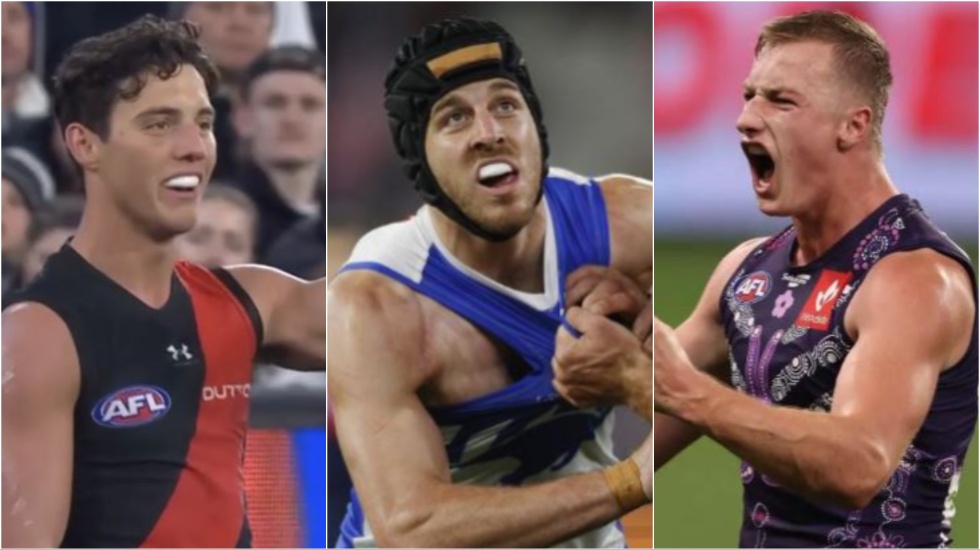
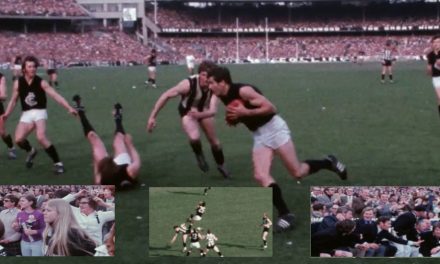

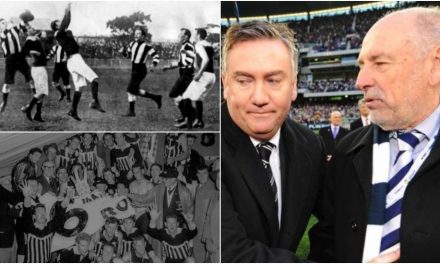


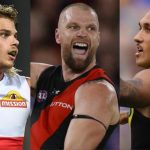

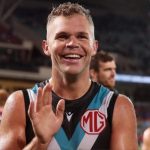


No Sheezle?